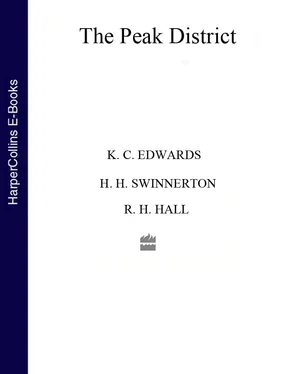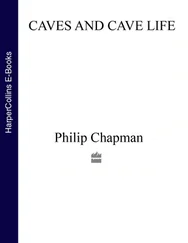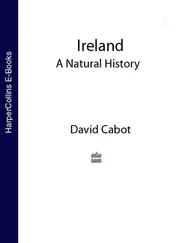K. C. EDWARDS
CHAPTER 1
INTRODUCTORY: THE FIRST NATIONAL PARK
By the side of religion, by the side of science, by the side of poetry and art stands natural beauty … the common inspirer and nourisher of them all .
G. M. TREVELYAN, O.M.
NATIONAL PARKS are tracts of country of outstandingly attractive scenery which are specially protected against adverse change and reserved for public enjoyment. In a country like our own, in which a high proportion of the population is concentrated in large cities and industrial districts, there is a real need for the setting aside of particular areas where townsfolk may find relief from the pressing throng and enjoy open-air recreation amid surroundings which bring them close to Nature. In national parks, moreover, the preservation of natural scenery is safeguarded as well as the surviving haunts of wild life. Indeed, for the study of living forms in their natural environment, whether plant, insect or animal, such areas are of special scientific value.
NATIONAL PARKS IN BRITAIN
Although the provision of national parks in Britain is a recent development, the idea of reserving selected areas of our finest landscape for the enjoyment of the public is by no means new. It stems in fact from the ideas connected with social betterment arising from conditions in the nineteenth century. The movement for national parks began well over half a century ago but not until the closing stages of the second world war did it gain official recognition.
In other countries national parks of various kinds have long been in existence, one of the earliest being the famous Yellowstone Park in Wyoming, established in 1872. Like others which followed it in America, this great reserve was “dedicated and set apart as a public park or pleasuring ground for the benefit and enjoyment of the people,” words which expressed the aspirations of many who later advocated similar projects in our own country. In a long-settled, densely populated land like Britain, however, with much of its surface under private ownership, the problem of public access to areas of scenic attraction has provided a formidable obstacle to the realisation of such hopes. The contrast between the old and new countries in this respect was clearly demonstrated in 1885 by two events. In that year, within the space of a few months, James Bryce’s Bill to give access to mountains in Scotland was rejected by Parliament at home, yet a proposal to create the Banff National Park in the Rockies was accepted by the Government of Canada without opposition. But Bryce’s attempt marked the beginning of a long campaign for the acceptance of the national park idea. Apart, however, from an inquiry made by the Addison Committee in 1931 and the passing of the Access to Mountains Act in 1939, the provisions of which were made inoperative by the second world war, little progress was made until recent years.
Meanwhile voluntary bodies had given active support to the movement and the effect on public opinion contributed much towards ultimate success. In 1935 two of the leading organisations, the Council for the Preservation of Rural England and the similar body for Wales, set up a Standing Committee for National Parks, which included representatives of many supporting interests. The Standing Committee worked unremittingly and proved a valuable instrument for educating the public and arousing interest among widely different sections of the community.
During the war, when much thought was devoted to post-war planning and reconstruction, the case for national parks was repeatedly stressed. Official publications such as the Report of the Scott Committee on Land Utilisation in Rural Areas (1942) and the White Paper on Control of Land Use (1944) gave firm support to their formation, while the Report on National Parks (1945) prepared by John Dower for the Minister of Town and Country Planning, by its cogent argument and its deep personal conviction, at last set the course for realisation. The Dower Report was followed by a detailed investigation resulting in the Hobhouse Report on National Parks (1947), of which the chief recommendations formed the basis of the National Parks and Access to the Countryside Act passed two years later. Indeed, so favourable had become the climate of opinion that the Act was passed without a single vote against it in either House.
Briefly, the Act of 1949 provided for the setting up of a National Parks Commission which is responsible for the designation of each individual park in England and Wales and for advising the particular authority chosen to administer it. The park authority, consisting largely of representatives from the existing local authorities within whose areas the park falls, undertakes the management and planning of the park. Other provisions of the Act dealt with important issues affecting public rights of way, access to open country and wild life protection. A further measure (under section 87) permitted the designation of smaller areas of outstanding natural beauty, not as national parks but as areas requiring the assistance of the Act in the interests of nature preservation and the protection of wild life. Several of these have already been designated, such as the Gower Peninsula and the Quantock Hills, and it is likely that many more will be added.
As a result of the Act, ten national parks have so far been established, of which the Peak District was the first. The others are the Lake District, Snowdonia, Dartmoor, Exmoor, the Pembrokeshire Coast, Brecon Beacons, the North York Moors, the Yorkshire Dales and Northumberland. Varying greatly in character and extent, these form a system having an aggregate area of nearly 4,750 square miles, or one-twelfth of the total area of England and Wales. This is surely an achievement which meets the long-felt needs of our highly urbanised people and which at the same time will secure large tracts of unspoilt country from inappropriate and unwarrantable forms of exploitation.
In Scotland the situation is different. The National Parks Act of 1949 referred only to England and Wales and no equivalent legislation has been passed for Scotland, except that the section of the Act dealing with nature conservation was made applicable to the whole of Britain. The Forestry Commission has nevertheless established a few national forest parks in Scotland, and although these have not the full status of national parks, they offer to the public increased facilities for access and open-air enjoyment.
The national parks of Britain differ from those of most other countries. To begin with, there are no large areas of wild scenery available for preservation like the huge National Parks of the U.S.A. or the great game reserves of Africa. Instead, the areas designated as parks are all of comparatively small extent and all are inhabited, even though the density of population in most cases is quite low. Again, the greater part of each national park is devoted to some form of economic activity such as farming, forestry and quarrying, thus creating problems of public access which seldom arise abroad. In every case in Britain the functions of a national park are added to an established pattern of economic and social life and must operate in such a way so as not to cause serious interference with existing activities. This circumstance naturally calls for much delicate negotiation in co-ordinating the various interests represented within a national park.
There is another important difference between our national parks and those abroad. Whereas the latter usually embrace truly natural scenery unmodified by human action, in Britain hardly any such areas remain. The land has been exploited by Man for so long that the results of his activities have profoundly altered the appearance of the surface. Even the natural vegetation has been greatly modified by various agricultural practices as well as by the chance or deliberate introduction of non-indigenous species. Forests have been entirely removed from some areas and have been created in others, while mining and quarrying have left their scars and debris on land once unspoiled.
Читать дальше












